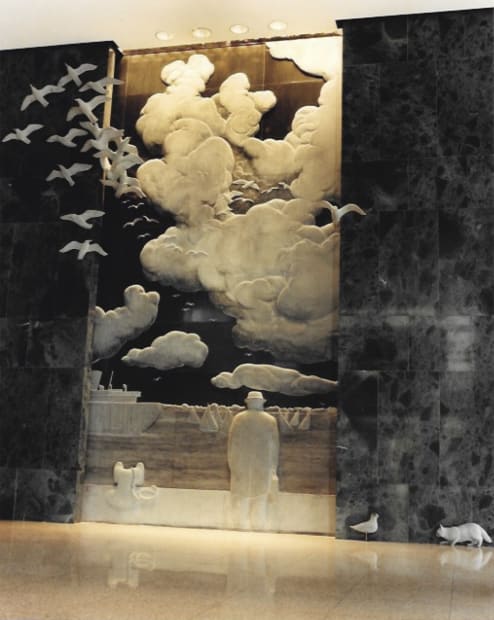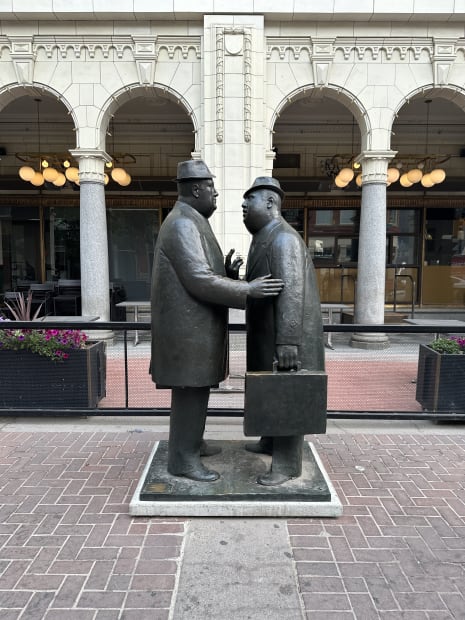-

-

William McElcheran in his studio. © The Estate of William McElcheran.
-
 William McElcheran, South Wind, Serpentine marble relief, over 25 ft. H, WaterPark Place, Toronto, Canada. Photograph by Christopher McElcheran.© The Estate of William McElcheran.
William McElcheran, South Wind, Serpentine marble relief, over 25 ft. H, WaterPark Place, Toronto, Canada. Photograph by Christopher McElcheran.© The Estate of William McElcheran. -
 William McElcheran, Conversation, Bronze, 77.9 x 44.8" in, 1980, City of Calgary Public Art Collection. © The Estate of William McElcheran.
William McElcheran, Conversation, Bronze, 77.9 x 44.8" in, 1980, City of Calgary Public Art Collection. © The Estate of William McElcheran. -
 William Hodd McElcheran, Am I Last?, Bronze, 9.5 x 12.4 x 9.5" in, 1997, AP, Cast in 1997-98, © The Estate of William McElcheran.
William Hodd McElcheran, Am I Last?, Bronze, 9.5 x 12.4 x 9.5" in, 1997, AP, Cast in 1997-98, © The Estate of William McElcheran.




